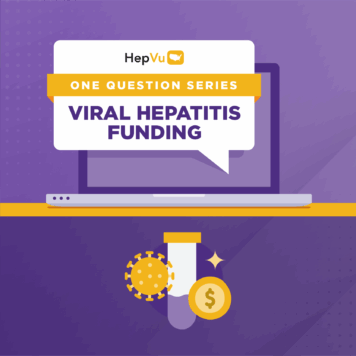Gregory Dore, MD is a Scientia Professor and the Head of Viral Hepatitis Clinical Research Program at the Kirby Institute at the University of New South Wales Sydney in Australia.
Q: Your career focuses on Hepatitis C and other infectious diseases, especially among marginalized populations such as people who use drugs and people who experience homelessness. What led you to focus on these diseases and populations?
I worked in East Africa at a mission hospital in the early ‘90s before I completed my training in infectious diseases. I was involved in HIV care at St. Vincent’s Hospital in Sydney, Australia during the height of the AIDS epidemic in the early- to mid-1990s. During that period in Australia, HIV was predominantly affecting Gay and Bisexual Men and people who inject drugs.
During the ‘90s, in Australia and many other countries, Hepatitis C was mainly managed by liver specialists. My previous experience with HIV gave me a real passion for improving the lives of marginalized populations, such as people who inject drugs. I saw Hepatitis C as an opportunity because there weren’t a lot of people from infectious diseases and public health getting involved in that work during the mid-to late ‘90s. I set up the Hepatitis C services at St. Vincent’s Hospital in 1999 and began my professional journey in Hepatitis C research and clinical care.
Q: You recently co-authored a commentary on the barriers to Hepatitis C treatment faced by persons who inject drugs in the U.S., published in The Journal of Infectious Diseases. The paper states that barriers to Hepatitis C care exist at the “systems level, as well as the level of medical providers and patients.” Could you talk about these barriers and how they impact the Hepatitis C epidemic in Australia and the U.S.?
Australia is very different from the U.S. One of the key differences is that although Australia is a federation of states, there’s a lot of federal leadership and strategic direction in public health. There has been a bipartisan approach to support public health strategies, including fighting HIV and Hepatitis C. This collaborative approach enabled us to have a very public health-centered and nonpolitical approach to HIV prevention, starting in the ‘80s and ‘90s. A major component of this approach was broad harm reduction. Needle syringe programs with federal government funding were in place from the early ‘90s, a stark difference to the situation in the U.S.
In the U.S., federal funding has not been able to be used to purchase needles and syringes for harm reduction programs. Australia provided resources for these programs because we felt it was important to protect highly marginalized populations by reducing their individual risks while not judging people for their lifestyle. The lack of federal funding in the U.S. is a system level issue that affects prevention services and public health infrastructure. This infrastructure is crucial, especially when marginalized populations may not have access to routine healthcare.
On the provider level, there’s still a considerable amount of discrimination in the U.S. There’s hesitation about treating people who inject drugs because of the perception that they won’t have good outcomes and won’t adhere to the treatment. In other words, the assumption is that they will just get re-infected anyway. Although some clinicians in Australia share that perspective, it’s certainly not the common belief. In Australia, we addressed this stigma on the provider level by allowing unrestricted access to the new direct-acting antiviral (DAA) therapies from early 2016. Any registered medical practitioner can prescribe these therapies. By making these therapies easily accessible, the Australian government sent a message that it doesn’t matter if you’re still injecting – there’s no requirement for abstinence to access treatment.
The Australian government also broadened the potential pool of providers that could treat Hepatitis C for people who inject drugs. Even if there are providers who are reluctant to treat people who inject drugs for Hepatitis C, there are many other clinicians that would be happy to be involved. This abundance of providers was fundamental to expanding access to care.
Another key factor is state and federal government funding for drug user community organizations. These groups are instrumental in education, prevention, and advocacy for the human rights and health of people who use drugs by connecting with many people with lived experiences of drug use and Hepatitis C. The partnerships among government, clinicians, researchers, and community groups have been pivotal to the Hepatitis C response in Australia.
On the patient level in the U.S., people who use drugs may be reluctant to seek treatment. Provider attitudes and the system’s lack of access to integrated care, such as co-located services, contribute to this patient hesitance. If you get the systems and providers right, then we can absolutely minimize patient level issues. All of these obstacles are interconnected. For example, developing a Hepatitis C model of care that is embedded within a community health clinic to provide other health and prevention services for people who use drugs is likely to promote a non-judgmental approach.
Q: What are some existing and new approaches to removing these Hepatitis C treatment barriers among people who inject drugs? How can the U.S. and other countries learn from each other to scale up services?
The first and obvious one is to remove any restrictions based on current drug use. That’s absolutely fundamental. There has been progress in the U.S., but it’s a pity that progress isn’t reflected on the federal level. It’s a predominantly state-based responsibility and there’s still many states that are dragging behind. Second, testing and treatment must be at a minimal cost or at no cost. Third, establish models of care that meet patient needs. As I mentioned earlier, good public health infrastructure can bring treatment directly to the people who need it. Embed treatment into drug treatment services, harm reduction services, and community clinics that are much more accessible and familiar to people who inject drugs. Within that context, train drug treatment professionals to treat Hepatitis C and vice versa. There are a lot of things that need to be done in the U.S. and some things are moving in the right direction, but still somewhat slowly.
Q: The commentary emphasized the need to bring Hepatitis C treatment to “community settings where patients already access other services.” What are some effective examples of integrating Hepatitis C care into existing services in Australia that the U.S. can learn from?
We haven’t gotten everything right in Australia, but there’s no doubt that we have very good Hepatitis C treatment embedded in our drug treatment services. We also have comprehensive Hepatitis C treatment access in the prison system. It’s appalling that in most prisons in the U.S., there’s still limited or no access to Hepatitis C treatment. In Australia, we’re now also looking at innovative strategies to deliver Hepatitis C treatment at needle exchanges.
For example, we do all HIV and Hepatitis B and C screening through a finger prick. This includes using a novel point-of-care technology for Hepatitis C RNA testing, in which the results come out in an hour and we can start the treatment the same day. The immediate screening and treatment are innovative strategies required to enhance overall treatment, use, and accessibility. The simpler you can make screening for people, particularly people who inject drugs, the better.
Q: In addition to scaling Hepatitis C treatment, why is it important to also address substance use disorder and the opioid epidemic in the U.S. through co-location of these services?
There’s a big risk of co-morbidity and co-mortality with Hepatitis C and substance use disorder. It’s about improving the lives of people that inject drugs and reducing the dangers they face. It doesn’t mean everyone needs drug treatment, but we need to make it accessible.
Treatment must be tailored to the patient. For instance, there are a lot of encouraging developments around depot buprenorphine. Depot buprenorphine is the long-acting version of the existing buprenorphine that is used to treat opioid disorder. It is a monthly injection rather than the daily or frequent care that current treatments require. Developing flexible strategies around treatments is important to provide holistic care of counseling and services to support and improve the Hepatitis C treatment for people who inject drugs.
Q: Given your expertise across research, clinical care, and policy, what steps can the U.S. take to raise awareness to overcome these structural and social barriers to treat people who inject drugs for Hepatitis C?
People who inject drugs have been victimized, discriminated against, and stigmatized for so long. It’s become such a political issue. I despair sometimes when I look to the U.S. and the way that it approaches its public health challenges. But there is hope in the people actively working to solve these issues. Dr. Stacey Trooskin, my co-author, is a classic example of an amazing leader in the area who brings absolute humanity to her work with the most marginalized people in society.
Stories of people like her are important to underscore the crucial aspects of providing care to highly marginalized individuals. There are a lot of people really committed to this work in treating Hepatitis C for the most and disproportionately affected populations, and we should continue to highlight their amazing efforts.




